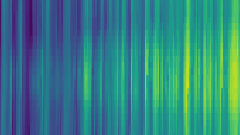tsam’s Change Log#
This is outdated. Please refer to the releases on GitHub for the most recent changes.#
Release version 2.0.1#
tsam release (1.1.2) includes the following new functionalities: * Changed dependency of scikit-learn to make tsam conda-forge runnable.
Release version 2.0.0#
In tsam release 2.0.0 the following functionalities were included: * A new comprehensive structure that allows for free cross-combination of clustering algorithms and cluster representations, e.g. centroids or medoids. * A novel cluster representation method that precisely replicates the original time series value distribution in the aggregated time series based on “Hoffmann, Kotzur and Stolten (2021): The Pareto-Optimal Temporal Aggregation of Energy System Models (https://arxiv.org/abs/2111.12072)” * Maxoids as representation algorithm which represents time series by outliers only based on “Sifa and Bauckhage (2017): Online k-Maxoids clustering” * K-medoids contiguity: An algorithm based on “Oehrlein and Hauner (2017): A cutting-plane method for adjacency-constrained spatial aggregation” that accounts for contiguity constraints to e.g. cluster only time series in neighboring regions
Release version 1.1.2#
tsam release (1.1.2) includes the following new functionalities:
Added first version of the k-medoid contiguity algorithm.
Release version 1.1.1#
tsam release (1.1.1) includes the following new functionalities:
Significantly increased test coverage
Separation between clustering and representation, i.e. for clustering algorithms like Ward’s hierarchical clustering algorithm the representation by medoids or centroids can now freely be chosen.
Release version 1.1.0#
tsam release (1.1.0) includes the following new functionalities:
Segmentation - the clustering of adjacent time steps - according to Pineda et al. (2018)
k-MILP - an extension of the MILP-based k-medoids clustering that allows automatic identification of extreme periods according to Zatti et al. (2019)
The option to dynamically choose whether to clusters found should be represented by their centroid or medoid.
